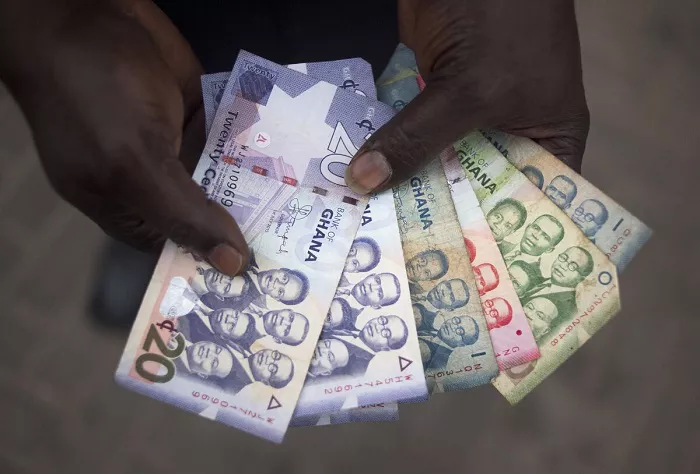The foreign exchange (FX) market is showing signs of stabilising, even though a significant gap remains between official and retail exchange rates. Analysts say this difference is due to structural supply shortages and recent regulations by the Bank of Ghana (BoG).
On Tuesday, June 17, the BoG’s official mid-rate for the US dollar was GH¢10.3, slightly lower than the GH¢10.35 recorded the day before. However, surveys in Accra’s parallel market showed retail buying rates between GH¢12.1 and GH¢12.7 per dollar, with selling rates close to GH¢13, and some outlets quoting GH¢13.1.
This means the retail market is pricing the dollar at 17 to 23 percent above the official rate. Experts say this premium is due to tight supply in the informal market, where physical cash is scarce. They stress that this is not caused by panic or speculation but by reduced dollar availability following new monetary rules.
Courage Boti, Manager of Macroeconomic Research at GCB Bank, explained that a recent BoG directive requires banks to hold reserves in the original currency of foreign deposits. This rule has cut dollar liquidity in the system significantly.
“Up to 25 percent of excess liquidity has been locked up as reserves at the BoG because of this directive. This explains the sharp drop in supply,” Mr. Boti said.
The policy’s impact is most evident in the retail cash market, which does not have the same access to foreign exchange as banks or large companies. For consumers and small businesses needing physical dollars for travel, education, or imports, the shortage has created a two-tier pricing system: one for formal electronic transactions and a higher one for cash purchases in the informal market.
Despite this gap, Mr. Boti believes the exchange rate remains within reasonable limits.
“We are not seeing the daily swings that would cause concern,” he told B&FT. “Rates have stabilised around GH¢12.6 to GH¢12.7 in the retail market, which looks like a correction towards the cedi’s real value.”
He noted that this range fits within the president’s earlier guidance of an acceptable exchange rate band between GH¢10 and GH¢12. Mr. Boti’s own forecast predicts a year-end midpoint of GH¢12.70, with a margin of plus or minus 80 pesewas.
“That means a range from GH¢12.1 to GH¢13.5. I’m comfortable with the current market levels,” he said.
DataBank Research supported this view in a note released on June 16. The firm said the interbank market shows relative stability, but pressures remain in retail segments.
DataBank reported that the cedi depreciated 0.97 percent week-on-week in the interbank market, closing at GH¢10.35 per dollar. In contrast, it weakened 6.37 percent in retail markets to GH¢12.55 and lost value similarly against the pound and euro.
According to DataBank, structural weaknesses — including seasonal foreign exchange demand and Bureau de Change (BDC) auctions — continue to limit the effectiveness of BoG interventions. The firm also warned that global issues, such as geopolitical tensions, could further weaken the cedi.
“This week, we expect increased BoG interventions to support stability, especially with possible gold windfalls from rising Israel-Iran tensions,” DataBank said.
“However, if demand for the US dollar as a safe haven rises more than expected compared to gold, the dollar could strengthen further against the cedi,” it added.
In recent months, BoG has increased efforts to stabilise the cedi, including forward FX auctions and gold-for-oil trades. The central bank also plans to tighten oversight of the informal currency market, where price swings are often larger than economic fundamentals would suggest.
Analysts warn that unless retail dollar supply improves — through more remittances, formal BDC support, or better dollar liquidity programs — the cash market premium is likely to remain.
Currently, experts describe the market as being in a fragile balance.
“The divergence between official and retail rates is real, but so is the overall stability,” Mr. Boti said. “The cedi seems to be holding steady within a range that reflects both policy goals and market adjustments. The key is avoiding large, sudden changes — and so far, we have not seen any.”
He added that in the second half of the year, market sentiment and global factors will be crucial in determining whether this calm holds or gives way to new volatility.


